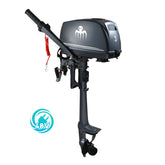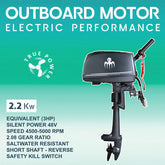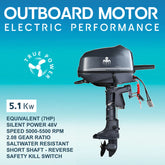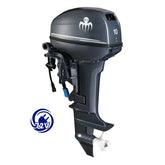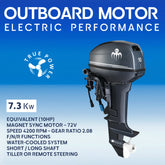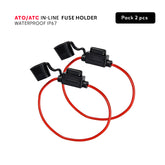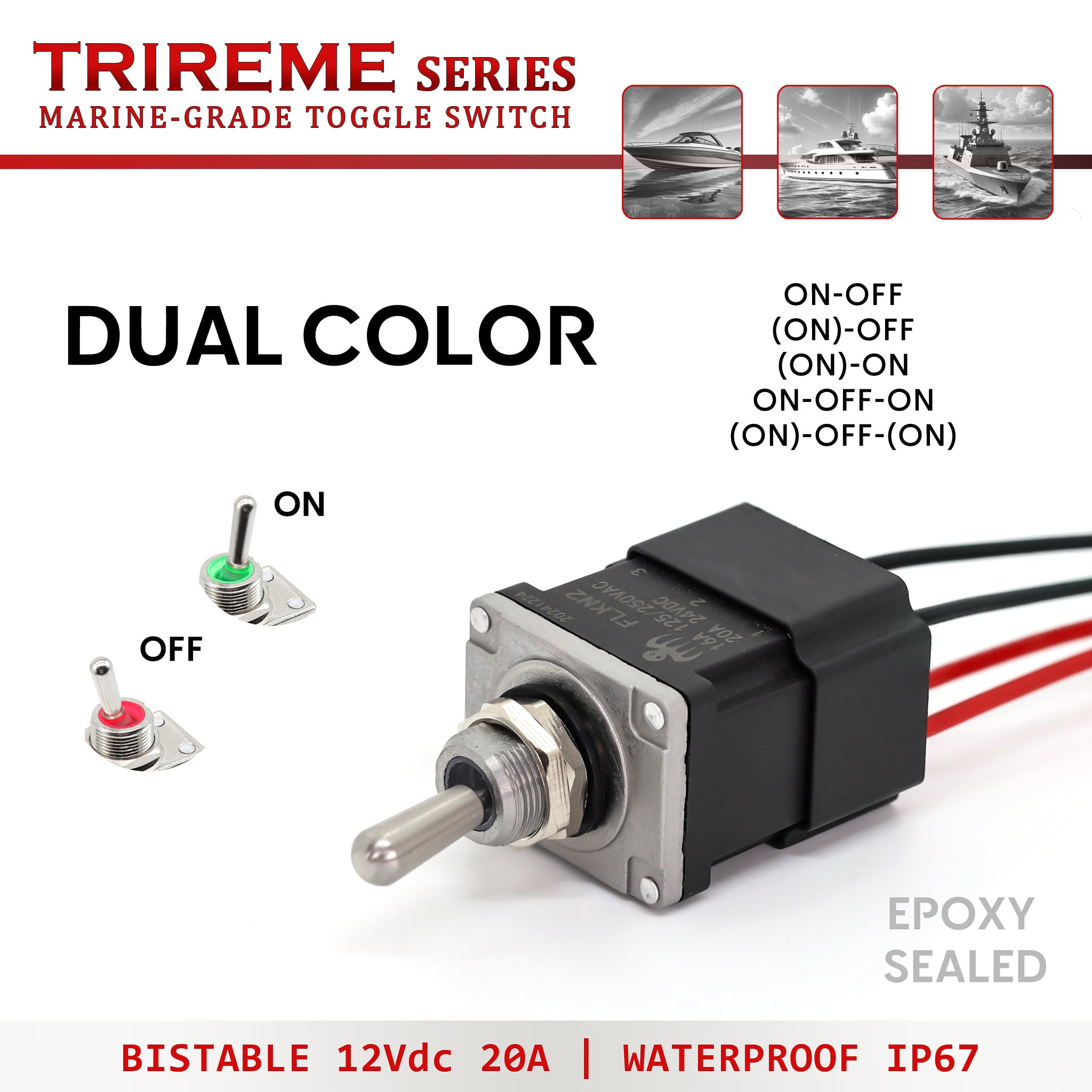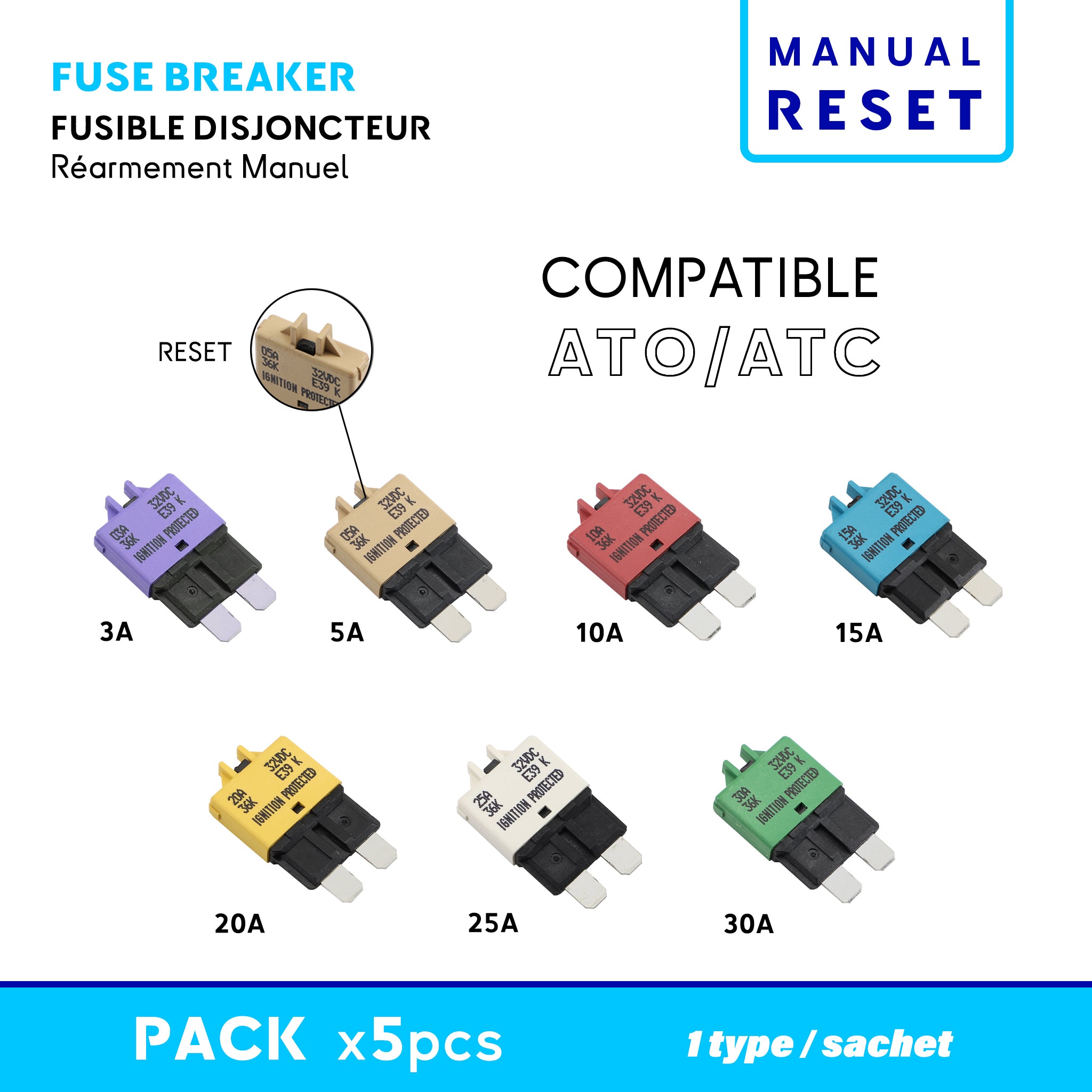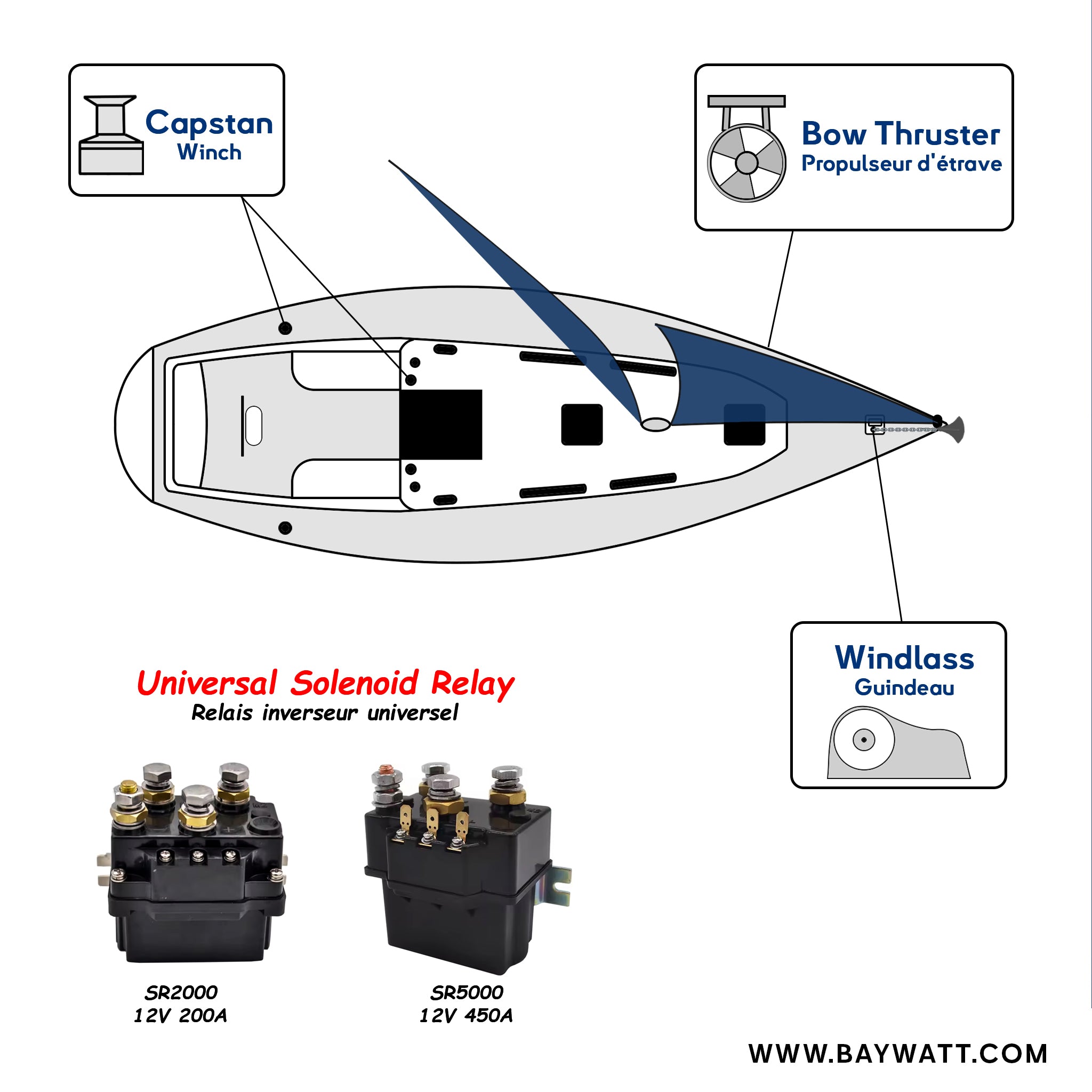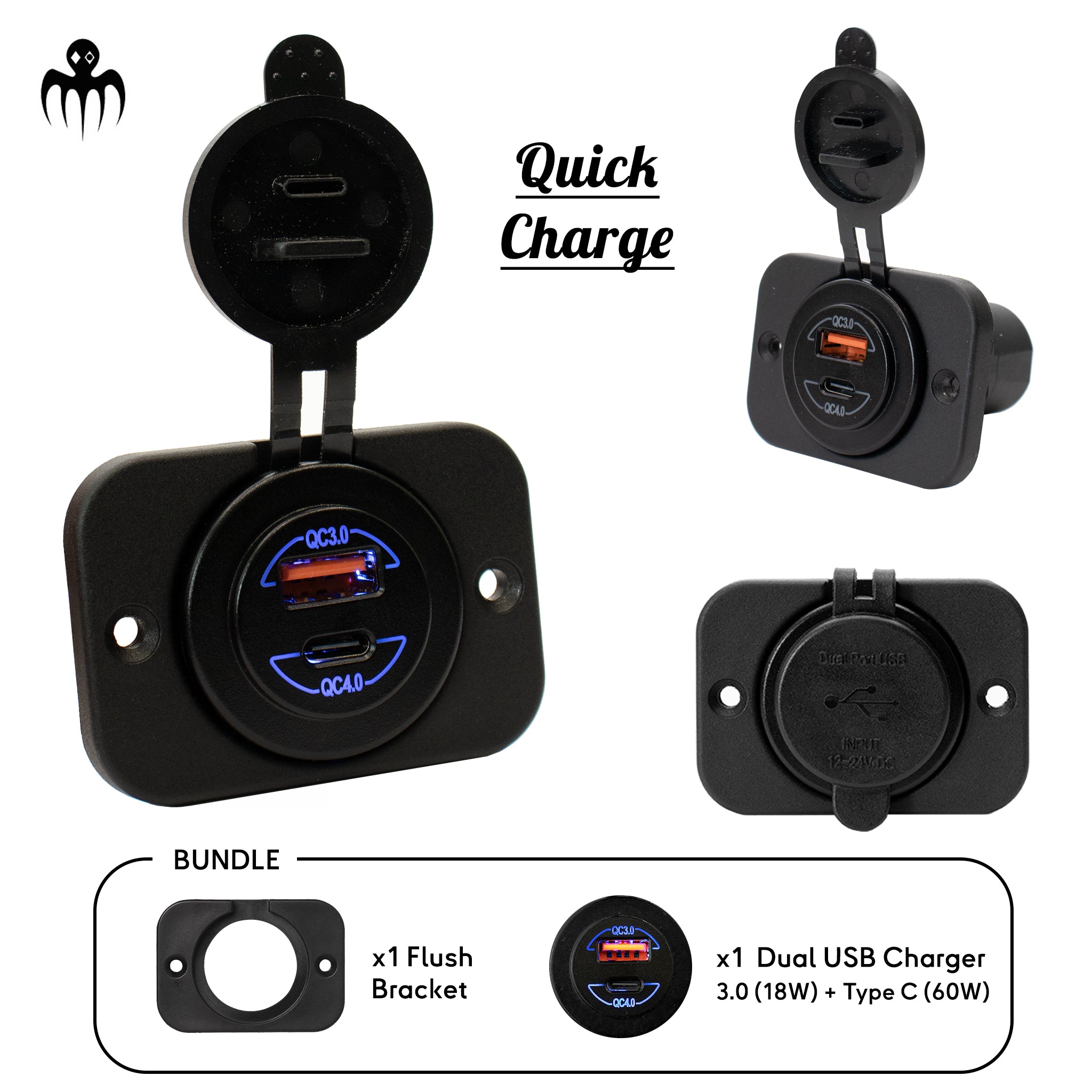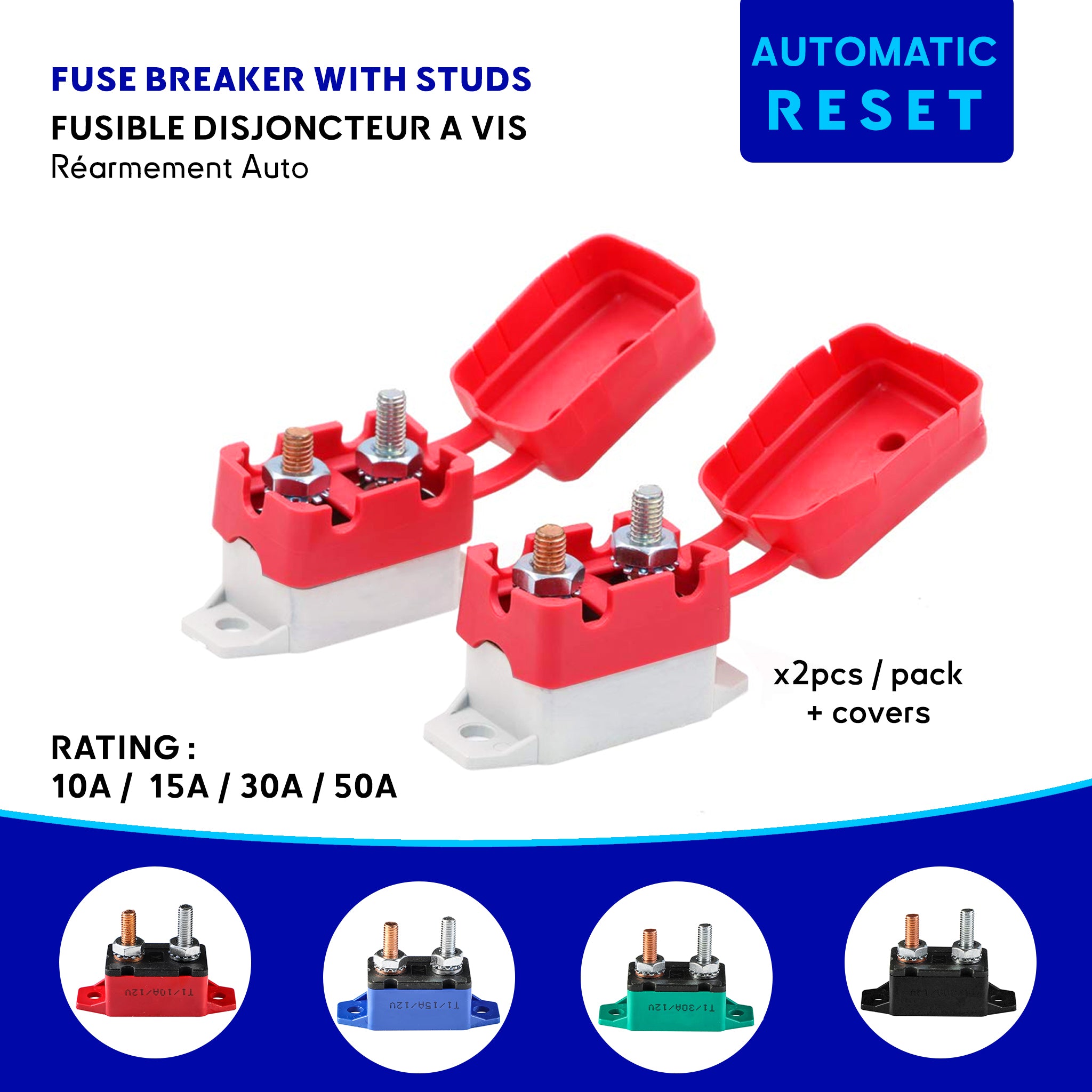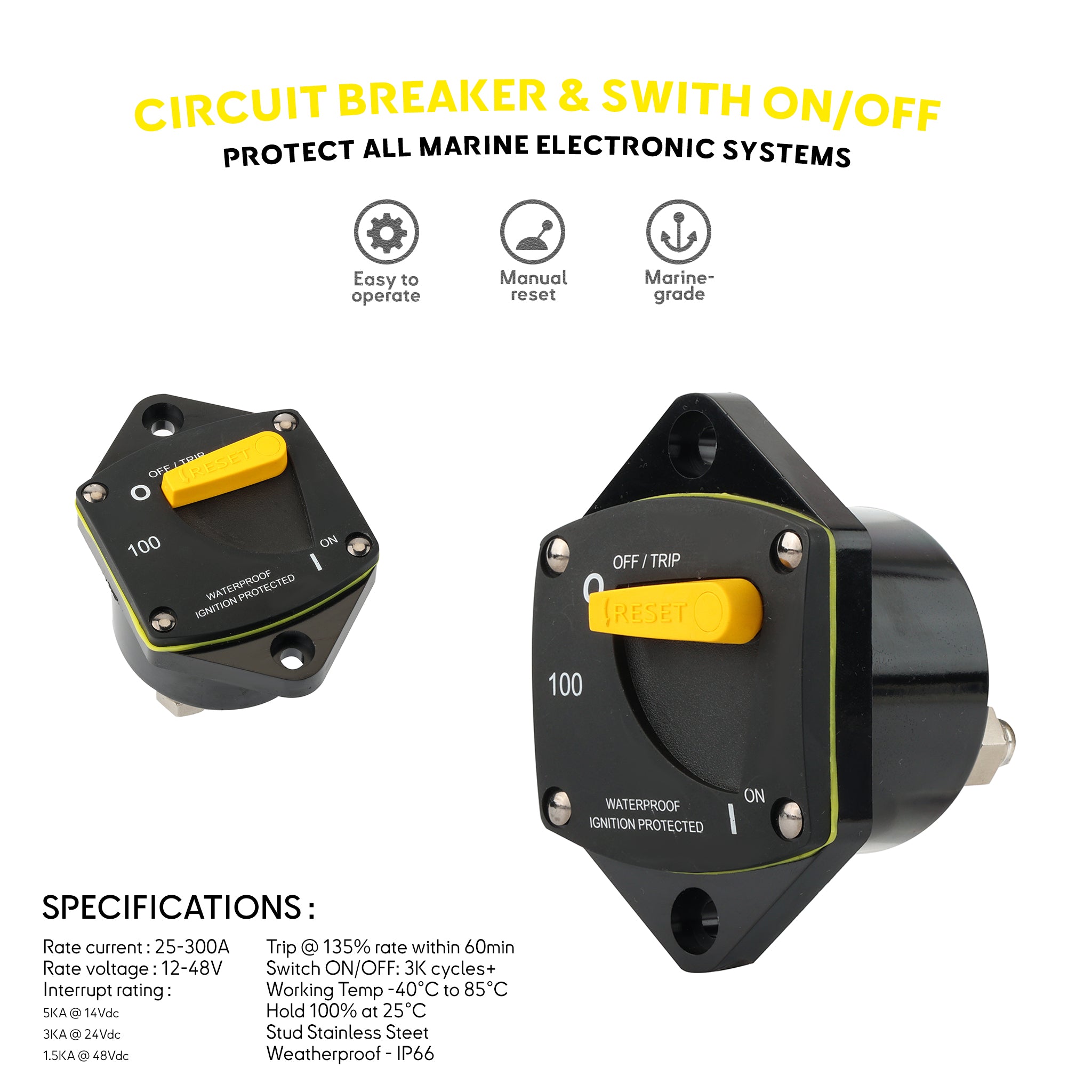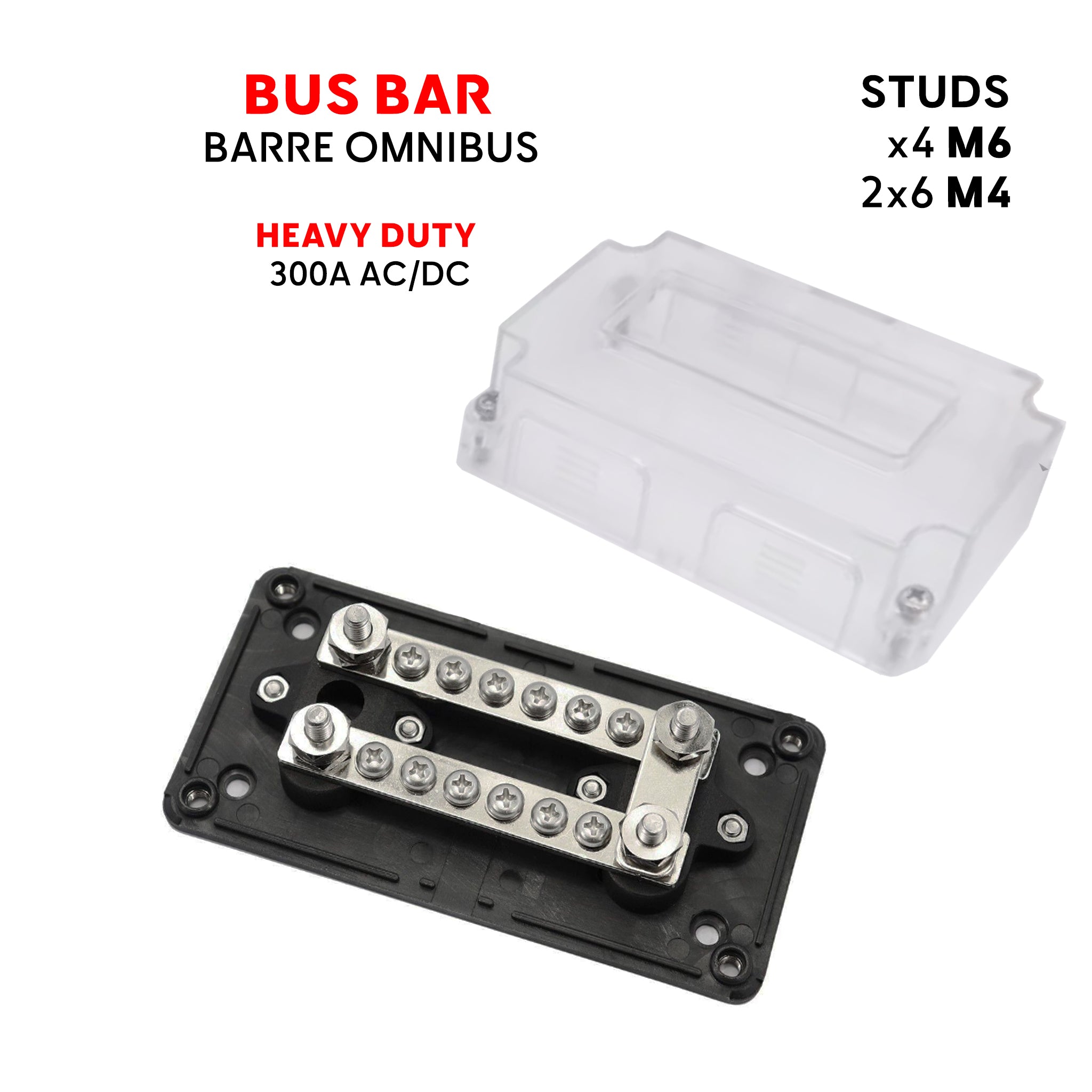12V, 24V or 48V DC: What voltage to choose for your Boat?
12V, 24V or 48V DC: What voltage to choose for your Boat?
Table of Contents

Onboard boat electricity has always been built on boat DC power. Batteries deliver direct current by nature, and everything from navigation lights to bilge pumps has been designed around it for more than a century. In 2025, the debate isn't "AC or DC?" — DC is the foundation. The real choice is: which boat voltage should you pick — 12V, 24V, or 48V?
⚡ Why Boats Run on DC
Batteries are DC by nature (lead-acid, AGM, lithium). Low-voltage DC up to a 48V nominal system — which charges to about ~54V — is widely treated as "safe low voltage." Above that, compliance and protection become significantly more complex.
Boats have short wiring runs, so voltage drop is manageable with proper cable sizing. Converting to AC via a boat inverter is still useful for domestic appliances (coffee machines, washing machines, induction cooktops), but remember that DC→AC conversion costs efficiency (often ~10–15%) and inverters need ventilation — not ideal in salty compartments. For everything else, a well-designed DC circuit remains the most reliable, energy-efficient backbone of the boat energy system.
Thanks to ecosystem momentum across automotive, trucking, solar panels, and marine industries, the shared standards of 12V / 24V / 48V keep parts affordable and available — from battery chargers to breakers and connectors.
🔹 12V DC — The Most Common Voltage
12V powers navigation instruments, radios, pumps, LED lighting, USB chargers, and switch panels. Most marine electronics are designed for 12V, which keeps installations simple and repairable.
Advantages
- Most common and widely supported — easiest for refits and field repairs.
- Best cost/value for panels, fuses, chargers, and accessories.
- Simple wiring; easy to troubleshoot at sea.
Limits
- High loads (e.g., >3000 W inverter) demand very high boat current (≈250 A at 12V).
- 120 mm² cable is hard to source; matching lugs and a suitable crimping tool are also challenging — especially if repairs are needed underway.
- Large 12V inverters can be expensive and less efficient.
Choose 12V if your priority is universal compatibility for instruments, pumps, and lighting, with modest AC needs.
Relevant Baywatt products (12V)
🔹 24V DC — The Balanced Choice
24V is the logical upgrade for larger yachts seeking energy efficiency without extreme cable sizes. Doubling voltage roughly halves current for the same power, reducing copper, weight, and heat while improving voltage-drop performance.
Advantages
- About 50% smaller cables than a 12V system for the same load.
- Smaller, more efficient 24V→AC inverters; easier installation.
- 12V electronics can run from stable DC-DC converters, often improving longevity.
- Well supported by solar panels, MPPTs, and multi-chemistry battery chargers.
Limits
- Dual-voltage architectures (12V instruments + 24V house) add complexity.
- Requires a 24V alternator or DC-DC charger strategy for balanced charging.
Choose 24V if you run bigger inverters (>3000 W), windlass, bow thruster, multiple fridges, and want manageable cable sizes with efficient AC support.
Relevant Baywatt products (12/24V)
🔹 48V DC — Standard for Electric & Hybrid
48V is becoming the standard for electric propulsion and very high "hotel" loads. Brushless motors (outboards/inboards/thrusters) reach the required torque and RPM at higher voltage, avoiding excessive current. It's also easier and more efficient to step down from 48V to 12V than to step up from 12V.
Advantages
- Much smaller cable sections than 12V/24V, improving reliability and reducing weight.
- Lower current reduces stress on busbars, connectors, and protection devices.
- Increasing ecosystem support (hybrid automotive) improves availability and pricing.
Limits
- ~54V charging ceiling marks the boundary of "safe low-voltage DC."
- Above 48V, standards thin out; sourcing interoperable breakers, fuses, and chargers becomes harder.
Choose 48V for hybrid/electric boats and large energy systems where cable reduction and efficiency are critical.
Relevant Baywatt products (48V)
⚠️ The Limits of Going Beyond 48V (72V, 96V+)
Higher voltages reduce current further, but once you exceed ~54V DC you enter high-voltage territory:
- Stricter safety requirements for human contact, insulation, and arc suppression.
- Fragmented ecosystem — few marine-grade, waterproof protection devices rated above 54V.
- Many breakers/fuses must live in switchgear cabinets, adding weight and complexity unsuited to boats.
- Integration risks increase because chargers and protection are not standardized across brands.
This is why the marine market continues to standardize on 12V / 24V / 48V for dependable energy efficiency and maintainability.
📌 Practical Scenarios
- Weekend cruiser: 12V (LED lighting, chartplotter, bilge pump; small inverter for occasional AC).
- ~40-ft yacht: 24V (windlass, bow thruster, fridge; efficient inverter for AC loads; controlled voltage drop).
- Hybrid/electric catamaran: 48V (electric propulsion, large hotel loads; step down to 12V for instruments).
✅ Conclusion
Boats run on DC because it's safe, battery-native, and universal. Choose the voltage that matches your loads and wiring realities:
Most common voltage for electronics and accessories; simplest to install and repair.
Balanced system for bigger loads and better efficiency with manageable cable sizes.
Standard for electric/hybrid propulsion and high-demand systems with minimal copper.
Beyond 48V, complexity and compliance outweigh the benefits. For the foreseeable future, boat volt standards will remain 12V, 24V, and 48V as the three pillars of reliable boat DC power. We hope this guide helps you choose the correct voltage to match your needs.
